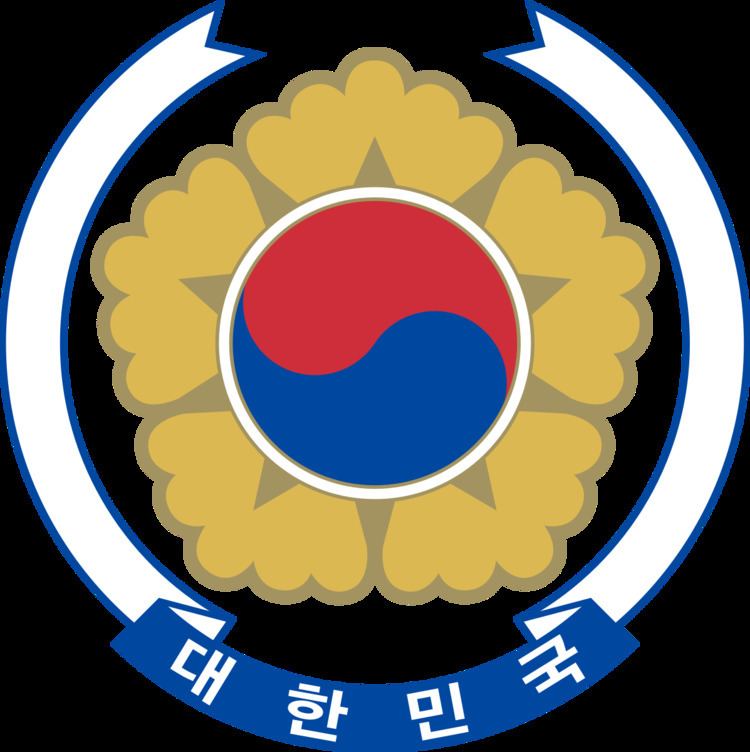 | ||
South Korean nationality law defines who is a South Korean citizen, as well as the procedures by which one may be naturalized into South Korean citizenship or renounce it.
Contents
Acquisition of Korean Citizenship
South Korean nationality can be acquired in a number of ways:
Under the Constitution of South Korea, North Korean citizens are also recognized as South Korean nationals. However, in practice, a formal evaluation needs to take place which requires documentary proof of North Korean nationality. Additionally, North Korean citizens do not have automatic protection from South Korea per se, since those with criminal histories are not accepted as South Korean citizens.
Korean diaspora
Additionally, South Korean law defines the term "Overseas Korean" as referring to South Korean nationals who reside overseas as well as "Koreans with a Foreign Nationality." The latter group is composed of former South Korean nationals who gave up their South Korean nationality (but barring those who did so to deliberately evade military service, at least until age 36) and children and grandchildren of former South Korean nationals. It is important to note that not every descendant of a South Korean can be counted as an "Overseas Korean" or "Korean with a Foreign Nationality" under this law. For example, a 25-year-old man who was born a South Korean national overseas but whose birth was unreported will have no documentation to prove his status as a former South Korean national, and can only gain status as an Overseas Korean if one of his parents or grandparents gave up South Korean nationality. Also, those who fall under Article 7 of the Addenda (Special Cases of Acquisition of Nationality for Persons of Maternal Line By Adoption of Jus Sanguinis to Both Lines of Parents) but failed to acquire South Korean nationality are not able to gain the status of an Overseas Korean unless the mother or a maternal grandparent has lost South Korean nationality.
Koreans in Japan who have South Korean nationality and Special Permanent Residence in Japan do not have a Resident registration number and cannot apply for a new passport from a South Korean embassy while outside Japan.
Naturalization
There are three types of naturalization under South Korean law:
- General naturalization
- Simple naturalization
- Special Naturalization
Those who acquire South Korean nationality by naturalization normally must give up foreign nationality within six months or forfeit South Korean nationality. An exception to this is draft-age males, who must complete or be exempted from military service before being allowed to forfeit Korean nationality.
The first person to naturalize as a South Korean citizen was a Taiwanese immigrant in 1957. From then until 2000, there were an average of just 34 naturalizations per year. In the decade that followed, these numbers increased sharply to an average of 9,816 per year, and by January 2011 the cumulative number of naturalized citizens over the years had reached 100,000. Chinese immigrants formed 79% of these, followed by Vietnamese (9.2%), Filipinos (5.2%), and Taiwanese (2.1%).
Former South Korean nationals can reacquire South Korean nationality by applying for reacquisition of nationality. However, this will reinstate the military service duty, if applicable to the national, and also requires forfeiting any foreign nationality within 6 months.
Visa free travel
Visa requirements for South Korean citizens are administrative entry restrictions by the authorities of other states placed on citizens of Republic of Korea. In 2014, South Korean citizens have visa-free or visa on arrival access to 172 countries and territories, ranking the South Korean passport 3rd in the world according to the Visa Restrictions Index.
Current policy
In 2010, the South Korean government legalized dual citizenship for some South Koreans who have acquired another nationality/citizenship, as well as foreigners who lived in South Korea for five years (two years if married to a South Korean).
A revised nationality law passed on April 21, 2010, by the National Assembly of South Korea and in effect since January 1, 2011, granted a limited number of persons dual citizenship.
These persons include:
There are transitional provisions for those who fit under the first category but had already forfeited one nationality.
As of December 2010, an application for dual citizenship can only be made inside the Republic of Korea and requires the applicant to currently hold an F-series visa. This would normally be an F-5 visa (Permanent Residency) or an F-4 visa (for former Korean nationals and their descendants, including Korean adoptees) or F-2 or F-6 visa (for spouses of Korean nationals). In the case of South Korean adoptees living abroad (e.g., in the U.S.), application to restore Korean citizenship, and thus obtain dual nationality, shall only be made while living in the Republic of Korea.
Dual citizenship holders:
Former policy
Prior to 2011, the South Korean government did not permit dual citizenship after the age of 21. Koreans with dual citizenship under South Korean law who work or study in South Korea were legally obliged by South Korea to choose one or the other citizenship soon after reaching that age.
In addition, South Korean men over the age of 18, including foreigners of South Korean descent, were subject to compulsory military service in the South Korean armed forces. From a law that was effective since 2005, a male dual citizen could not be allowed to abandon his South Korean citizenship until he finished his military service, or had received a special exemption from military service. In several cases, American men of South Korean descent had been drafted into the South Korean army upon visiting the country, despite having never been to South Korea before. At least two of the aforementioned cases had involved individuals whose names had, without their knowledge, been recorded in the Hoju, the South Korean Family Census Register, which does not automatically remove the names of former South Korean citizens.
